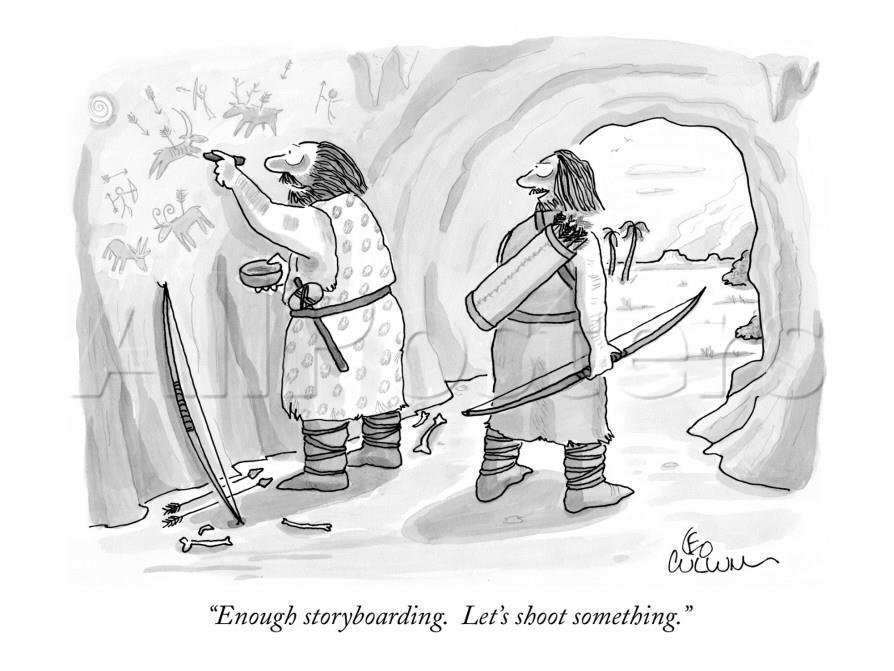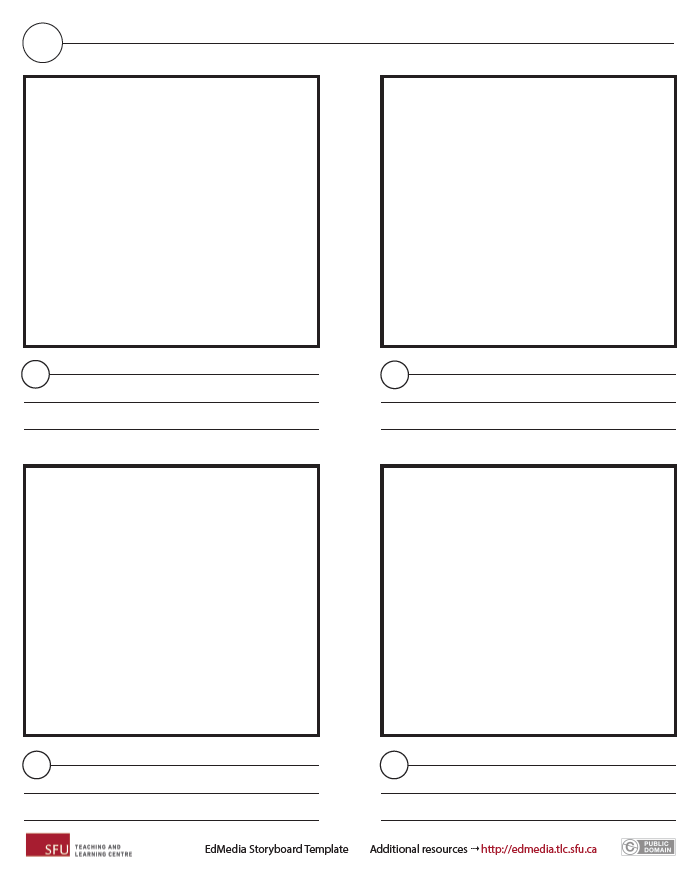Scripting & Storyboarding Educational Media
Duane Woods & Jason Toal
Jan 31, 2019
http://edmedia.tlc.sfu.ca/
Session Overview
- Icebreaker
- Project Plan
- Scripting Overview
- Scripting Activity
- Share and Discuss Scripts
- Storyboard Overview
- Storyboard Activity
- Share and Discuss Storyboards
- What's next?
Storytelling Icebreaker

Project plan
- Medium
- Message/Objective
- Concept/Description
- Timeline
- Resources
- Locations
- Talent/Subject
- Crew
- Distribution/Platform
Why tell a story?
“We are a species that's wired to tell stories. We need stories. It's how we make sense of things.
It's how we learn.”
Steven Soderbergh, director (Ocean’s 11, Traffic)
Stories help us learn
“Stories are our primary tools of learning and teaching, the repositories of our lore and legends. They bring order into our confusing world. Think about how many times a day you use stories to pass along data, insights, memories or common-sense advice.”
-
Edward Miller, founder of Edward Elementary, illustrator and designer
A script is your road map

Purpose
-
Teaching (eg. Life of a plant cell)
-
Training (eg. Safe Laboratory Procedures, How To Change a Tire)
-
Promotional (Come to SFU!)
-
Testimonial (actual user with positive feedback)
-
Congratulatory (eg. awards, achievements, retirement)
-
Documentary (interviews, run-and-gun)
-
Fiction (story created to entertain)
Message
- What do you want your audience to know?
- Who is your target audience?
What is your story?
- Can your message be put into a story? (Yes!)
- Characters/Subjects
- Purpose
- Plot
Concise and Efficient
- Value your audience's time
- Shorter is better for video, audio has more leeway
- remove excess, cumbersome words or sentences
- 150 words/minute
Video is Visual, Audio is Auditory
- What is your audience going to look at?
- What is your audience going to hear?
- A-roll and B-roll
- Motion or Emotion
- Photos, text, graphics, slides
- Music, sound effects
3-Act Structure
- Act I: Introduction and Set Up (25% of the story)
- Here's the problem/proposal
- Intro characters
- Act II: Delivering your message (50% of the story)
- Diving into the problem
- What happened? Surprises?
- Act III: Climax, Wrap Up, Conclusion (25% of the story)
- What changed?
- Look to the future
- Remind Your Viewers
- Call to Action (ie. go here for more)
Questions as the Story
- For interviews, your questions can tell the story
- start with an intro question of the person and problem or proposal
- move into asking to break down the problem or proposal
- end with asking where it's going, what is the resolution or how the audience can take action
Scripting activity
- Write a short 3-Act story
- Approximately 150 words/minute for spoken words
- write it as narrated prose or in two columns for audio (spoken word) and video (visuals)
Should I storyboard?
“I don't storyboard like some. I mean, all directors are different. I plan meticulously - really meticulously.”
- Paul Greengrass, director (United 93, Captain Phillips)
What is a storyboard?
- How we visualize a project
- An agreement among stakeholders
- Can be drawings, photos, icons
Storyboard types
- Video
- Animation
- Explainer
- Powerpoint
Video

Explainer

Explainer
Stories in 4 parts
- 4 panels
- Yonkomo
- 4 icons



Storyboarding activity
What is a storyboard?
- Bullet One
- Bullet Two
- Bullet Three

